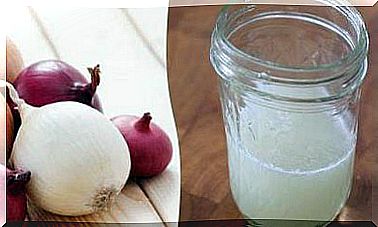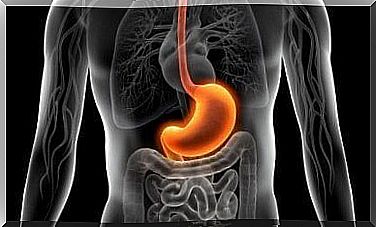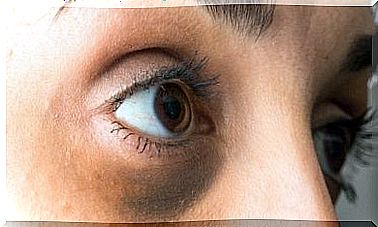What Is Uvulitis And Why Can It Happen?
Uvulitis usually results from bacterial infections but can also occur from lesions or allergic reactions.

Uvulitis is inflammation of the uvula, a small spindle muscle that hangs from the lower edge of the soft palate, above the root of the tongue. This structure is more commonly known as the uvula.
Uvulitis usually occurs because of infectious processes, allergic reactions, lesions after certain medical procedures or the use of inappropriate substances. If you want to learn more about this clinical setting, read on.
What is uvulitis?
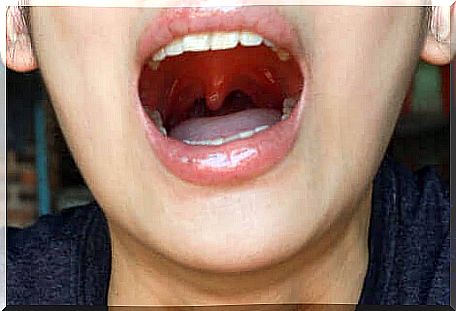
According to the National Cancer Institute (NIH), the uvula is a flap of soft tissue that is found suspended in the posterior part of the mouth. Although in the past this structure was thought to be completely vestigial, it was discovered that it had a clear purpose: to prevent food from entering the nasal cavity.
The Medigraphic Medical Portal defines uvulitis as “cellulitis – infection of the tissue – which results in erythema (redness), edema (accumulation of fluid), pain, fever and an irritating cough.” It should be emphasized here that even if bacterial or viral infection is the most common trigger for this pathology, it is absolutely not the only one.
What are its causes ?
According to the United States National Library of Medicine, the most common cause of uvulitis is infection with streptococci, a group of bacteria that are pathogenic to humans. Up to 30% of acute pharyngitis is associated with Streptococcus pyogenes, a condition widely related to uvulitis.
Other pathological infectious agents that cause this clinical setting are H. Influenzae type B and Streptococcus pneumoniae (pneumococcus). On the other hand, infectious uvulitis occurs more in young patients of school age and has a clear pattern of seasonality, especially in temperate regions. The peak of sensitivity occurs at 5, 10 and 12 years.
Infectious uvulitis is not the only possible variant of this pathology. The non-infectious type can be caused by the following:
- A lesion in the posterior part of the throat.
- An allergic reaction to pollen, dust, dead skin cells in pets, or certain foods.
- Inhaling or swallowing certain toxic elements by mistake.
- An operation, such as removing tonsils and other medical processes, such as performing an endoscopy.
- To smoke.
Symptoms of uvulitis
The patient should think of acute uvulitis when the uvula is more inflamed compared to the pharynx and if it shows signs of febrile fever. Among the most common general symptoms we find the following:
- Fever, if it is the consequence of an infection.
- Sensation of having something in the throat, accompanied by choking or retching.
- Cough.
- Pain when swallowing.
- Excessive production of saliva.
- Little appetite.
According to the Colgate Professional Portal, if the symptoms of uvulitis do not go away after a few days or if white spots appear in the back part of the mouth, it is possible that the patient is suffering from streptococcal pharyngitis. It is more common in children, but adults can also manifest it.
Diagnosis and treatment
The Drugs.com medical portal shows us that there are many diagnostic tests available to detect the underlying patterns of uvulitis in the patient. We thus find:
- Blood test. It may be necessary to quantify the general state of health of the patient and rule out certain problems.
- Throat culture. A sample of the oral mucosa is obtained and it is cultured in a specialized medium. It is used to detect possible germs responsible for uvulitis, if it is infectious.
- Allergy test. Inflammation of the uvula can be the result of an allergic process. Detecting the allergen is essential to avoid this clinical setting and others much more serious, such as anaphylactic shock.
- X-ray of the neck. Especially valid for patients who have difficulty swallowing.
Regarding the treatment, it will be different depending on the cause. In the face of bacterial uvulitis, specific antibiotics will be prescribed to combat the pathogen and, in the case of an allergic origin, antihistamines will need to be administered. Steroids also reduce inflammation.
Home care
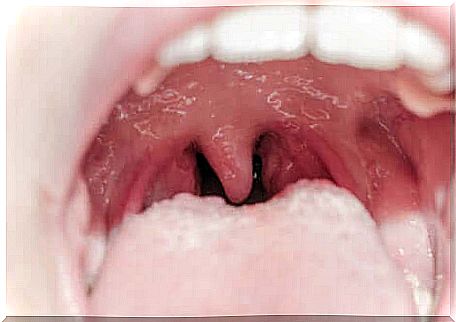
According to the UFhealth portal, there are several things you can do at home to improve symptoms of uvulitis. Among these measures, we can highlight the following:
- Continuous rest. Uvulitis can heal on its own or with treatment in 1-2 days.
- Drink plenty of fluids and gargle with lukewarm salt water to reduce inflammation.
- Use sprays that help reduce itching in the throat.
- Consume over-the-counter pain relievers. These reduce the pain produced by inflammation of the uvula.
- Do not smoke and avoid inhalation of smoke as these two things cause throat irritation.
Follow your doctor’s directions
As you may have seen throughout the article, uvulitis is a sign of another underlying condition and not a disease in itself. From infections to allergic frames, the reasons that cause inflammation of the uvula can be very varied.
Usually, this condition heals in a day or two with the right treatment. The method of intervention will depend on the causative agent because a bacteria does not fight in the same way as an allergic inflammation.

